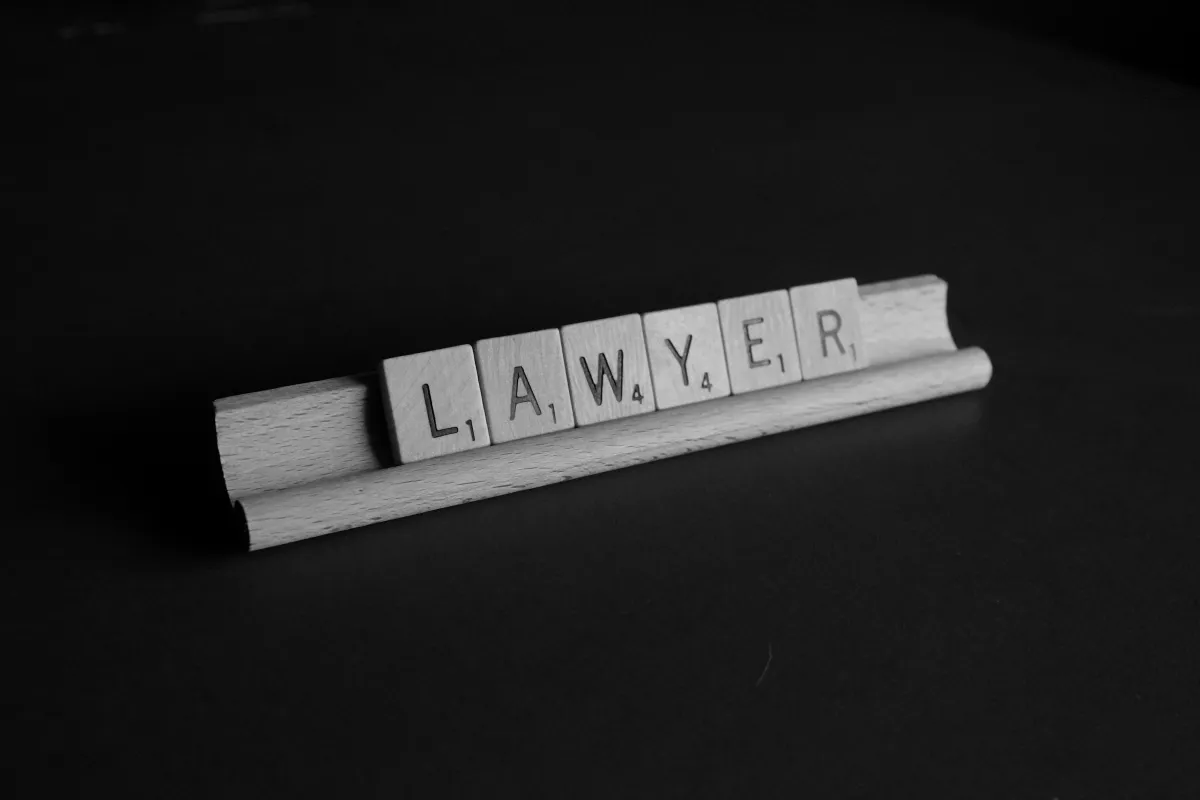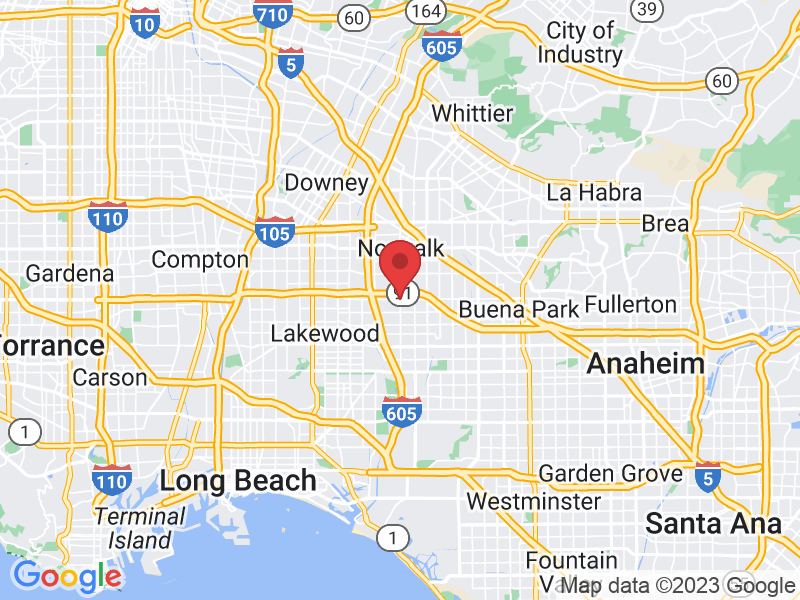FREE CONSULTATION
Featured
On:


Were you injured in a car accident?
At SOS Accident Lawyers, we provide personalized service and fight for your rights. Our experienced attorneys understand the uniqueness of each case. With deep knowledge of accident law, we ensure you receive just compensation for your injuries.
Contact us for a free consultation and get the justice you deserve.
WHAT IS MY
CASE WORTH?
5-Star Reviews On...

&

Frequently Asked Questions
We understand that you may have a lot of questions after being in a car accident. Our FAQ section is designed to provide you with some basic information about personal injury law in California. However, please keep in mind that this is not legal advice and you should consult with an attorney to discuss your specific case.
How much time do I have to file a personal injury lawsuit in California?
In California, the statute of limitations for filing a personal injury lawsuit is typically two years from the date of the injury. This means that if you have been injured due to someone else's negligence or wrongdoing, you generally have two years from the date of the incident to initiate legal action against the responsible party. Failing to file a lawsuit within this period may result in the loss of your right to pursue compensation for your injuries.
However, there are several exceptions and circumstances that can affect the statute of limitations in a personal injury case:
Discovery rule: If you were unaware of the injury or its cause at the time it occurred, the statute of limitations may be extended. In such cases, the two-year limit begins when you discovered or reasonably should have discovered the injury and its connection to the defendant's actions.
Minors: If the injured party is a minor (under 18 years old), the statute of limitations is typically tolled (paused) until they turn 18. Once the minor turns 18, they generally have two years from their 18th birthday to file a personal injury lawsuit.
Legal disability: If the injured party is considered legally disabled (e.g., due to mental illness or cognitive impairment), the statute of limitations may be tolled until the disability is removed or the individual is no longer under the disability.
Defendant's absence: If the defendant (the person responsible for the injury) is out of the state or hiding, the statute of limitations may be extended to account for the time they were not present or available for legal action.
Medical malpractice: In cases involving medical malpractice, the statute of limitations is generally three years from the date of injury or one year from the date the injury was discovered or should have been discovered, whichever occurs first. However, specific rules and exceptions may apply, so consulting with an attorney is essential.
Government entities: If your personal injury claim is against a government entity or employee, different time limits apply. In California, you have six months from the date of the injury to file a claim with the appropriate government agency. If the claim is denied, you typically have six months from the date of the denial to file a lawsuit.
Given the complexity of statutes of limitations and the various exceptions that may apply, it's crucial to consult with a knowledgeable personal injury attorney as soon as possible after an injury occurs. An attorney can help you understand your legal rights, navigate the filing process, and ensure that you do not miss any critical deadlines in your case.
What are some common injuries that occur in car accidents?
Car accidents can result in a wide range of injuries, from minor to severe and even life-threatening. Some common injuries sustained in car accidents include:
Whiplash: Whiplash is a neck injury that occurs when the head is forcefully and quickly thrown back and forth. This sudden motion can cause damage to the muscles, ligaments, and tendons in the neck, leading to pain, stiffness, and limited range of motion.
Traumatic brain injuries (TBIs): Car accidents can cause traumatic brain injuries, ranging from mild concussions to severe brain damage. TBIs can result in symptoms such as headaches, dizziness, memory problems, cognitive impairments, and changes in personality or behavior.
Fractures: The force of a car accident can lead to broken bones or fractures in various parts of the body, including the arms, legs, ribs, collarbone, and skull. The severity of fractures can vary, and treatment may require immobilization, surgery, or rehabilitation.
Soft tissue injuries: Car accidents can cause damage to muscles, ligaments, and tendons throughout the body. These injuries can include strains, sprains, and contusions, which can result in pain, swelling, and limited mobility.Spinal cord injuries: The impact of a car accident can cause spinal cord injuries, leading to temporary or permanent paralysis, loss of sensation, and loss of bodily functions. In severe cases, spinal cord injuries can be life-altering and require long-term care and rehabilitation.
Internal injuries: The force of a car accident can cause internal injuries, such as damage to organs, internal bleeding, or ruptured blood vessels. These injuries can be life-threatening and may require emergency medical treatment.
Lacerations and abrasions: Car accidents can cause cuts, scrapes, and bruises due to broken glass, sharp metal, or impact with objects inside the vehicle. These injuries can range from minor to severe, depending on the depth and location of the wound.
Psychological trauma: Car accidents can also lead to psychological injuries, such as post-traumatic stress disorder (PTSD), anxiety, and depression. These mental health issues can have a significant impact on a person's daily life and overall well-being.
It's essential to seek immediate medical attention after a car accident, even if you believe your injuries are minor. Some injuries may not be immediately apparent or may worsen over time without proper treatment. Additionally, documenting your injuries and treatment is crucial if you decide to pursue a personal injury claim related to the accident.
How much compensation can I expect to receive for my injuries?
The amount of compensation you can expect to receive for your injuries in a personal injury case depends on various factors, and no two cases are exactly alike. Some of the factors that can influence the compensation you may receive include:
Severity of injuries: More severe injuries typically result in higher compensation due to the increased medical expenses, loss of income, and impact on the victim's quality of life.
Medical expenses: Compensation may cover both past and future medical costs, including hospital stays, surgeries, medications, physical therapy, and any necessary medical equipment or accommodations.
Lost wages and loss of earning capacity: If your injuries prevent you from working or affect your ability to earn a living in the future, you may be entitled to compensation for lost wages and diminished earning capacity.
Pain and suffering: Compensation for pain and suffering is intended to address the physical and emotional distress caused by your injuries. This can be difficult to quantify, but factors such as the severity and duration of the pain, the impact on your daily life, and the nature of the injury will be considered.
Emotional distress: In some cases, you may be entitled to compensation for the psychological impact of your injuries, such as anxiety, depression, or post-traumatic stress disorder (PTSD).
Loss of enjoyment of life: If your injuries significantly impact your ability to participate in and enjoy activities you once enjoyed, you may be entitled to compensation for this loss.
Property damage: If your personal property, such as your vehicle, was damaged in the accident, you may be entitled to compensation for the cost of repairs or replacement.
Comparative negligence: If you were partially at fault for the accident, the amount of compensation you receive may be reduced based on your degree of responsibility. For example, if you are found to be 20% at fault for the accident, your compensation may be reduced by 20%.
It's important to note that the specific amount of compensation you can expect to receive will depend on the unique circumstances of your case. A personal injury attorney can help you assess the potential value of your claim, gather evidence, negotiate with insurance companies, and, if necessary, represent you in court to ensure you receive the compensation you deserve.
What should I do if I've been in a car accident?
If you've been in a car accident, it's essential to take specific steps to ensure your safety, protect your legal rights, and preserve evidence for any potential claims. Here's a list of steps you should follow:
Check for injuries: Assess yourself and any passengers for injuries. If anyone is hurt, call 911 immediately to request medical assistance. Even if injuries seem minor, it's essential to get checked by a healthcare professional, as some injuries may not be apparent right away.
Move to safety: If it's safe to do so, move your vehicle to the side of the road or another safe location to avoid obstructing traffic or causing further accidents. Turn on your hazard lights and use safety triangles or cones if you have them.
Call the police: Notify the police of the accident, even if it appears to be a minor one. A police report can be an essential piece of evidence for insurance claims and potential legal disputes. Make sure you obtain a copy of the report once it's available.
Exchange information: Exchange contact and insurance information with the other driver(s) involved in the accident. This should include names, addresses, phone numbers, driver's license numbers, vehicle registration numbers, and insurance policy details.
Document the scene: Take photos of the accident scene, including the position of the vehicles, any visible damage, road conditions, traffic signs, and weather conditions. Also, take pictures of any injuries you or your passengers may have sustained.
Gather witness information: If there are any witnesses to the accident, collect their contact information. Their statements can be valuable in supporting your version of events.
Notify your insurance company: Report the accident to your insurance company as soon as possible. Provide them with accurate information about the incident, but avoid admitting fault or making statements that could be used against you later.
Seek medical attention: Even if you feel fine after the accident, it's crucial to see a healthcare professional for a thorough examination. Some injuries may not be apparent immediately, and early diagnosis and treatment can be essential for your recovery.
Keep records: Maintain organized records of any medical treatment, property damage repairs, lost wages, and other expenses related to the accident. These records will be crucial if you decide to pursue a personal injury claim.
Consult a personal injury attorney: If you've been injured in a car accident, it's a good idea to consult with an experienced personal injury attorney. They can help you understand your legal rights, negotiate with insurance companies, and, if necessary, represent you in court to ensure you receive the compensation you deserve.
By following these steps, you can protect yourself and your legal rights, and improve your chances of obtaining fair compensation for any injuries or damages resulting from the car accident.
What should I do if I'm involved in a hit-and-run accident in California?
If you find yourself involved in a hit-and-run accident in California, it's important to stay calm and take these key steps to protect yourself and your interests:
Safety First: Move to a safe location away from traffic, and check if anyone else involved requires immediate medical attention.
Call the Authorities: Contact the police as soon as you can. Provide them with as much detail as you can about the accident, such as the description of the other vehicle and its license plate number, if you managed to note it down.
Seek Medical Attention: Even if you don't immediately feel injured, it's vital to seek medical attention as some injuries may only present symptoms hours or days later. This is also important as it documents your condition, which could be used as evidence if you decide to pursue a legal claim.
Document the Incident: Take photographs of the scene, your vehicle, and any visible injuries. If there are witnesses, try to get their contact information.
Notify Your Insurance Company: Report the incident to your insurance company as soon as possible. Give them a thorough and honest account of the incident.Consult a California Accident Lawyer: The complexities of dealing with a hit-and-run case can be daunting. A seasoned California accident lawyer can help you navigate the legal process, file all necessary paperwork, and fight for your rightful compensation.
Remember, a hit-and-run incident is a serious offense in California. While it can be a stressful and daunting experience, taking these steps can help protect your rights and provide the best chance of a successful resolution.
What are some of the damages that I can recover in a personal injury lawsuit?
In a personal injury lawsuit, you can seek compensation for various types of damages depending on the specifics of your case. These damages are typically divided into two categories: economic damages and non-economic damages.
Economic damages: These are quantifiable financial losses that result from the injury. They can include:
a. Medical expenses: Compensation for past and future medical costs related to your injury, such as hospital bills, doctor visits, medications, surgeries, rehabilitation, physical therapy, and assistive devices.
b. Lost wages: Compensation for income lost due to your inability to work while recovering from your injuries.
c. Loss of earning capacity: Compensation for the reduction in your ability to earn income in the future because of your injury.
d. Property damage: Compensation for repairing or replacing damaged property, such as your vehicle, in a car accident.
e. Out-of-pocket expenses: Compensation for any additional expenses incurred as a result of your injury, such as transportation costs to medical appointments or hiring help for household chores.
Non-economic damages: These are less tangible losses that result from your injury and are harder to quantify. They can include:
a. Pain and suffering: Compensation for the physical pain, discomfort, and distress you experienced as a result of your injury.
b. Emotional distress: Compensation for the psychological impact of your injury, such as anxiety, depression, insomnia, or post-traumatic stress disorder (PTSD).
c. Loss of enjoyment of life: Compensation for the diminished ability to participate in and enjoy activities you previously enjoyed before your injury.
d. Loss of consortium: Compensation for the impact of your injury on your relationship with your spouse or partner, such as loss of companionship, affection, or sexual relations.
In some cases, you may also be eligible to recover punitive damages, which are designed to punish the defendant for particularly egregious or malicious conduct and to deter similar behavior in the future. However, punitive damages are relatively rare and only awarded in specific circumstances.
The specific damages you can recover, as well as the amount, will depend on the unique circumstances of your case. A personal injury attorney can help you evaluate your case, identify the potential damages you can claim, and work towards securing the compensation you deserve.
What is the difference between negligence and strict liability?
Negligence and strict liability are two legal theories under which a person or entity can be held liable for causing harm to another person. While both theories can be applied in personal injury cases, they have different underlying principles and requirements for establishing liability.
Negligence:
Negligence is based on the idea that a person or entity has a duty to act with reasonable care to prevent causing harm to others. If they fail to do so and their actions or inactions lead to someone else's injury, they can be held liable for damages. To establish negligence, the injured party (plaintiff) must prove the following four elements:
a. Duty of care: The defendant owed the plaintiff a legal duty to act with reasonable care under the circumstances.
b. Breach of duty: The defendant failed to uphold their duty of care by acting or failing to act in a way that a reasonably prudent person would under the same circumstances.
c. Causation: The defendant's breach of duty was a direct and proximate cause of the plaintiff's injury.
d. Damages: The plaintiff suffered actual damages (e.g., physical injury, property damage, or financial loss) as a result of the defendant's breach of duty.
Examples of negligence include car accidents caused by a driver's inattention, a property owner's failure to maintain safe premises, or a medical professional's failure to provide proper care.
Strict liability:
Strict liability is a legal theory in which the defendant can be held liable for damages regardless of their intent or level of care. In strict liability cases, the plaintiff doesn't need to prove that the defendant was negligent or at fault. Instead, they only need to demonstrate that the defendant's action or product caused the injury.
Strict liability often applies in cases involving:
a. Defective products: If a manufacturer or seller provides a defective product that causes injury, they can be held strictly liable for damages, even if they were not negligent in creating or distributing the product.
b. Abnormally dangerous activities: If someone engages in activities that are inherently dangerous and pose a significant risk to others, such as using explosives or storing hazardous materials, they can be held strictly liable for any resulting injuries.
c. Animal attacks: In some jurisdictions, including California, the owner of an animal that causes injury (e.g., a dog bite) can be held strictly liable for damages, regardless of whether they knew the animal was dangerous or took precautions to prevent the attack.
In summary, negligence focuses on the defendant's failure to act with reasonable care, while strict liability holds the defendant liable regardless of their intent or level of care. Both legal theories serve to compensate injured parties for their losses, but the requirements for establishing liability differ significantly.
What is comparative fault?
Comparative fault, also known as comparative negligence, is a legal principle used in personal injury cases to determine the extent to which each party involved in an accident is responsible for the resulting damages. In California, the courts follow the "pure comparative fault" rule when assessing the degree of fault of each party.
Under California's pure comparative fault rule, an injured party (plaintiff) can recover damages even if they are found to be more at fault than the defendant. The plaintiff's compensation will be reduced according to their percentage of fault, regardless of the extent.
For example, let's say a plaintiff is awarded $100,000 in damages but is found to be 60% at fault for the accident. Under California's pure comparative fault rule, the plaintiff would receive $40,000 in compensation (40% of the total damages).
California's pure comparative fault rule applies to various personal injury cases, such as car accidents, slip and fall incidents, and product liability claims. The rule ensures that the compensation awarded in personal injury cases is fair and proportional to each party's responsibility for the accident.
It's important to note that in California, the pure comparative fault rule also applies to both economic and non-economic damages. This means that reductions based on fault percentages will affect not only compensation for financial losses, such as medical bills and lost wages, but also compensation for non-economic losses, such as pain and suffering.
When dealing with a personal injury case in California, it's crucial to consult with an experienced personal injury attorney familiar with the state's comparative fault laws. An attorney can help evaluate your case, gather evidence to establish fault, negotiate with insurance companies, and, if necessary, represent you in court to ensure you receive the compensation you deserve.
What is the discovery process?
The discovery process is a crucial phase in civil litigation, including personal injury cases, where both parties gather and exchange information and evidence relevant to the case. The primary purpose of discovery is to allow each side to prepare their case, assess the strengths and weaknesses of the opposing side, and obtain evidence that may support their claims or defenses.
The discovery process usually takes place after the initial pleadings (e.g., complaint and answer) have been filed, and before the trial begins. The main tools used in the discovery process include:
Interrogatories: Written questions sent by one party to the other, which must be answered under oath. Interrogatories typically ask for factual information, such as names, addresses, dates, or details about the circumstances of the case.
Requests for Production of Documents: Formal requests for the opposing party to provide specific documents or other tangible evidence related to the case. Examples of documents that may be requested include medical records, accident reports, photographs, or correspondence.
Requests for Admissions: Written statements sent by one party to the other, asking them to admit or deny the truth of certain facts or the authenticity of specific documents. These requests help to narrow down the issues in dispute and establish which facts are not in contention.
Depositions: Oral testimony given by a witness, party, or expert under oath, usually conducted outside of the courtroom, and recorded by a court reporter or electronically. During a deposition, attorneys for both parties have the opportunity to ask questions and gather information about the case. Depositions can be used to evaluate the credibility of witnesses and gather evidence that may be used at trial.
Subpoenas: Legal orders that compel a person to provide documents or testify in a deposition or trial. Subpoenas can be used to obtain information from non-parties who may have relevant evidence or knowledge about the case.
Expert Witness Disclosures: Parties may be required to disclose information about expert witnesses they plan to use at trial, including their qualifications, the subject matter of their testimony, and the basis for their opinions.
The discovery process is governed by specific rules and procedures that vary depending on the jurisdiction. In general, the scope of discovery is broad, and parties are allowed to request any information that is reasonably calculated to lead to the discovery of admissible evidence. However, there are limits to protect privileged information, such as attorney-client communications or trade secrets.
Discovery can be time-consuming and complex, and it often plays a significant role in shaping the outcome of a case. An experienced attorney can help navigate the discovery process, protect your interests, and gather the necessary evidence to build a strong case.
What is mediation?
Mediation is a form of alternative dispute resolution (ADR) that aims to resolve conflicts between parties outside of the courtroom. It is a voluntary, confidential, and informal process in which a neutral third party, known as the mediator, facilitates communication and negotiation between the disputing parties. The goal of mediation is to help the parties reach a mutually agreeable settlement without the need for a trial.
During mediation, the mediator does not have the authority to impose a binding decision or judgment on the parties. Instead, the mediator assists the parties in identifying their interests, generating options for resolution, and working towards a mutually acceptable agreement. The mediator may meet with the parties together, in a joint session, or separately, in private caucuses, to facilitate communication and negotiation.
Some key aspects of mediation include:
Voluntary participation: Parties typically enter mediation voluntarily, although some jurisdictions may require mediation in certain types of cases before proceeding to trial. The parties can also choose to end the mediation process at any time.
Confidentiality: Mediation is generally confidential, which means that the discussions, negotiations, and settlement proposals that occur during the process cannot be disclosed in court or used as evidence if the case proceeds to trial. This confidentiality encourages open and candid communication between the parties.
Control over the outcome: Since the mediator does not have the authority to impose a binding decision, the parties retain control over the outcome of the mediation. A settlement is reached only if all parties agree to its terms. If the parties cannot reach an agreement, they are free to pursue other dispute resolution methods, such as litigation or arbitration.
Cost and time efficiency: Mediation is often less expensive and time-consuming compared to litigation, as it avoids the costs and delays associated with court proceedings.
Preserving relationships: Mediation can be less adversarial than litigation, allowing the parties to preserve their personal or business relationships and find mutually beneficial solutions.
Mediation can be used in various types of disputes, including personal injury cases, family law disputes, contract disputes, and employment conflicts. While mediation is not suitable for all cases, especially those involving criminal charges or significant power imbalances, it can be an effective way to resolve disputes in a more collaborative and efficient manner than traditional litigation.

Greg Woodhead
Managing Partner
Greg Woodhead is an accomplished attorney and the founder of SOS Accident Lawyers, where he serves as managing partner. Specializing in personal injury law and pharmaceutical litigation, Mr. Woodhead is committed to helping his clients navigate the complex legal system and obtain fair compensation. With years of experience representing both injured clients and insurance companies on the defense side, Mr. Woodhead brings a unique perspective to his practice. His understanding of how insurance companies operate allows him to anticipate their tactics and better serve his clients.
Mr. Woodhead's passion for representing those in need started while he was attending Pepperdine School of Law, where he volunteered at the Legal Aid Clinic in the heart of skid row in Los Angeles. This experience solidified his desire to help those who require legal assistance and he has been doing so ever since. In addition to his law degree, Mr. Woodhead also earned a degree in Pepperdine's highly regarded dispute resolution program, which gives him the skills to effectively mediate and settle complex legal issues.
Outside of his work as an attorney, Mr. Woodhead enjoys playing and watching basketball, spending time with his family, watching movies, and attending church. His commitment to justice and equality extends beyond the courtroom and into his personal life as well.
If you need a personal injury attorney who is dedicated, experienced, and passionate about helping you obtain fair compensation, look no further than Attorney Greg Woodhead and SOS Accident Lawyers.
Post Address and Mail
Main Office:
Cerritos/Artesia
11756 Artesia Blvd. Suite B
Artesia, CA 90701
Los Angeles Office:
155 N. Lake Ave. 8th Floor
Pasadena, CA 91101
San Diego Office
845 15th St. Ste 103
San Diego, CA 92101
San Jose Office
99 South Almaden Blvd.
Suite 600 San Jose, CA 95113
Ready to get started?
Schedule a free consultation by giving us a call at:
FREE CONSULTATION









